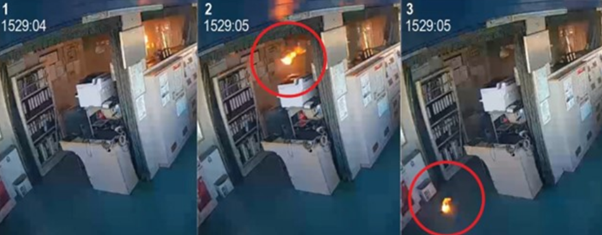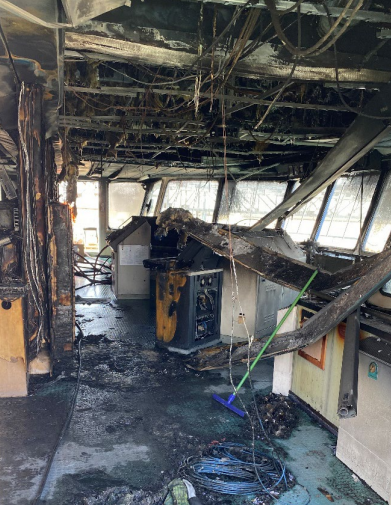The thermal runaway of a cell within a handheld radio’s lithium-ion battery led to a fire on an oil tanker last year while docked in Baton Rouge, Louisiana, the National Transportation Safety Board (NTSB) in the U.S. said Thursday.
The oil tanker S-Trust was docked at the Genesis Port Allen Terminal on November 13, 2022, when a fire started on the bridge. Fire teams from the vessel’s crew extinguished the fire about 1550.
There were no injuries, and no pollution was reported. The damage to the vessel was estimated at $3 million.
Now the National Transportation Safety Board (NTSB) in the U.S. has issued its marine investigation report, and determined that the fire was caused by one of the cells in a lithium-ion battery for an ultra-high-frequency handheld radio exploding.
The batteries and chargers for the handheld radios were located on the communications table on the bridge. The vessel’s crew extinguished the fire. The S-Trust’s navigation, communication and alarm systems were damaged beyond use. No injuries were reported, as the NTSB said.

Photos from the bridge closed-circuit camera showing (1) a second explosion occurs, (2) an object is propelled on fire into the air (circled), and (3) the object, still on fire, landing on the floor. (Source: Stalwart Management Ltd).
Lithium-ion battery cell explosions are typically caused by a thermal runaway, a chemical reaction that can cause the cell to ignite and explode. A lithium-ion battery cell can spontaneously experience a thermal runaway if damaged, shorted, overheated, defective or overcharged.
Crews can help to prevent thermal runaways and ensuing fires, according to the NTSB, by following manufacturers’ instructions for the care and maintenance of lithium-ion batteries; properly disposing of damaged batteries; avoiding unsupervised charging; and keeping batteries and chargers away from heat sources and flammable materials.
“Companies should ensure that lithium-ion batteries and devices that use lithium-ion battery packs are certified by Underwriters Laboratory or another recognized organization,” the report said.
Additionally, the NTSB advises companies should ensure that if a lithium-ion battery fire occurs, crews can attempt to extinguish the fire with water, foam, CO2, or other dry chemical or powdered agents designed for use on class A (combustible) fires.
However, if the battery fire cannot be extinguished, NTSB said that “personnel should attempt to allow the pack to burn in a controlled manner, including by watching for nearby cells that may also experience thermal runaway and extinguishing other combustibles that may catch on fire.”



